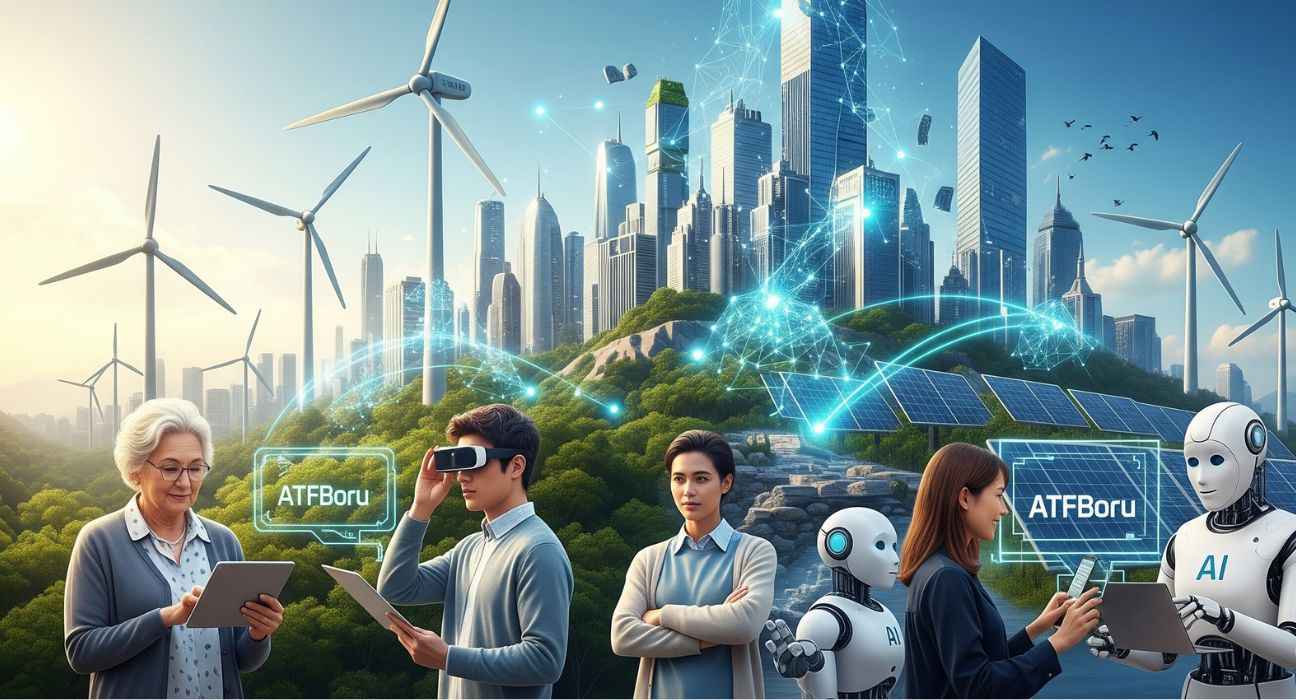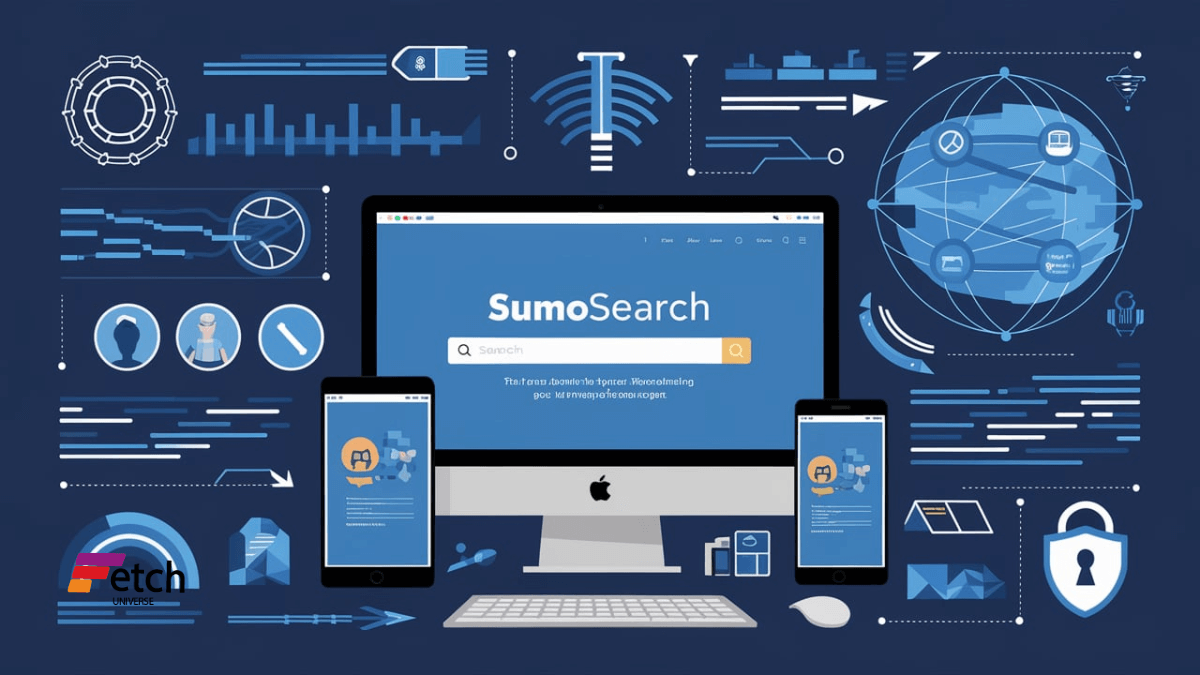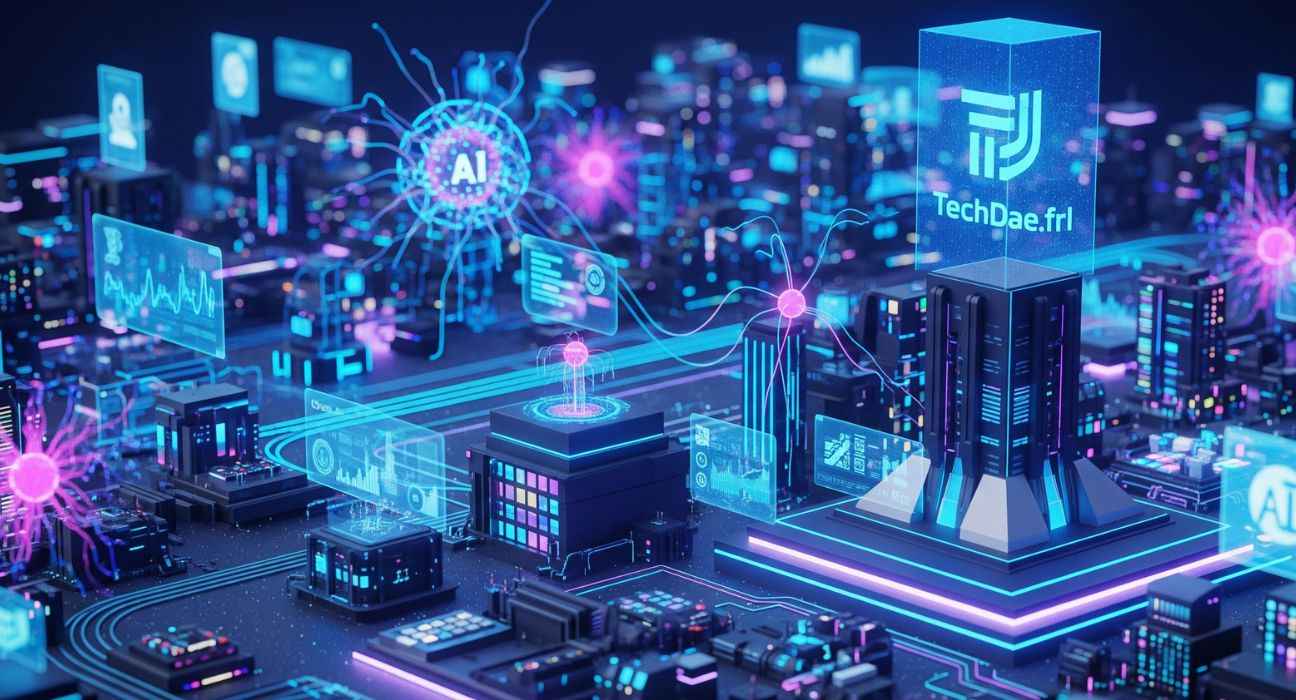ATFBoru: Bridging Technology and Society for a Sustainable Future

Introduction
As the global society is evolving faster and faster, the role of technologies joining society is becoming more significant. A promising example of such an interaction is the Advanced Technology for Bridging Opportunities and Resources Utilization called ATFBoru. It includes not only the possible technological solutions for the transformation of society but also the aspect of sustainability. In this article, the complexity of ATFBoru is discussed together with its role in being a link between technology and society as well as facilitating sustainability.
Understanding ATFBoru
Definition and Concept
From this perspective, it could be argued that ATFBoru symbolizes a postmodern paradigm for development that explores how technologies and society can be used in order to innovate and provide solutions that are efficient in the longer term. It covers a wide cross-section of freight domains such as information technology, renewable energy industry, agricultural machinery, construction equipment, and urban freight. The idea is to identify and then use available technology to solve some of the existing social problems, improve the economy, and support the system.
Historical Context
Specifically, ATFBoru was conceived due to the increasing understanding that technology-based solutions cannot adequately address many contemporary social issues. Traditionally technology development is known to cause side effects for instance negative impacts on the environment and unequal distribution of resources. That is why, the risks mentioned above are still on the table and are not effectively addressed despite the growing popularity of sustainable technology, such as ATFBoru which is designed to embrace the four-way social, economic and environmental perspective.
The Role of Technology in ATFBoru
Innovations Driving Change
Information technology is an important component of the ATFBoru framework. Key areas of innovation include:
Renewable Energy Technologies
It is worth mentioning that sources of renewable energy including solar, wind, and hydroelectric power belong to sustainable technology. Besides the fact that these technologies help in the optimization of the usage of fossil fuels in society, the issues also generate employment opportunities and the development of the economy.
Smart Agriculture
Precision farming and trends in biotechnology for improved production of food crops reduce the effects of agriculture on the environment. Smart agriculture is the means of using data analytics, drones, and IoT devices to analyze the ways resources are used to grow crops.
Sustainable Urban Development
Green buildings and smart cities are one of great examples of how advances in technology can support the better living quality in urban surroundings. All these technologies seek to lower greenhouse gas emissions, increase energy efficiency, and provide comfort to the people in urban areas.
Ethical Considerations
Technology remains a critical area of growth and as we keep advancing, then the question of ethics crops up. In its case, the ATFBoru framework promotes sustainable innovation and development which are coherent with social and environmental justice. When the fundamental concept of ethics is incorporated into technology development, ATFBoru is confident that the resulting technologies will contribute positively to the lives of every human being.
Bridging Society Through ATFBoru
Community Engagement and Participation
The concept of the community is another of the guiding principles of ATFBoru. Technology can only be created in consultation with the intended beneficiaries of that technology. This is particularly true because, with such a participatory arrangement, the exteriors also get to be incorporated.
Case Study: Community Solar Projects
Such potential of the company can also be seen from the ability of community solar initiatives to promote local communities. Such projects enable residents to pool their resources in order to purchase solar energy which will cost less while promoting the use of environmentally friendly sources of power. These practices involve the community members in decision making which makes them responsible for their progress.
Education and Capacity Building
Education is the medium that brings together technology and society. According to the ATFBoru framework, school-based programs should prepare people to meet the challenges of living in a world that is increasingly dominated by the use of technology. This consists of not only technical skills but also innovativeness and skills in solving problems.
Lifelong Learning Initiatives
Continuous learning programs are vital as the world turns into a technological one at a very high rate. Through the kind of education that ATFBoru offers, people of all ages learn to use technology in a way that will help them further their education thus helping to create a society that will sustain itself.
Economic Implications of ATFBoru
Job Creation and Economic Growth
In this context, it can be said that the potential of ATFBoru is in it being able to bring about a boom in the creation of employment opportunities in different fields. Such changes as the shift towards the use of renewable resources for example are likely to create many job opportunities across the world. Such opportunities do not only foster more economic stability but also social equity since they create opportunities for what most deprived communities call niches.
Sustainable Business Practices
This paper argues that the Sustainable Group is a vital component of the ATFBoru framework because it seeks to have businesses embrace sustainability. Corporate sustainability is becoming highly valued from the consumer side, as customers show a preference for goods produced by companies with environmental consciousness.
Case Study: Green Entrepreneurship
Green entrepreneurship is a developing factor within the confines of the ATFBoru structure. There are new schemes being adopted by businessmen to make money from natural concerns. For instance, firms that supply products to reduce waste, sustainable packaging, and green products are popular in the market.
Environmental Sustainability and ATFBoru
Addressing Climate Change
Global climate change is one of the greatest global challenges if not the single biggest challenge of the 21st century. The ATFBoru framework asserts to the necessity of invention technologies that seek to reduce climate change impacts. Eco-efficiency relates to the creation of renewable energy such as the manufacturing of power, encouraging sustainable usage of land, etc.
Carbon Capture and Storage Technologies
Technologies related to CCS such as ATFBoru present other techniques within the framework of innovation. These technologies aim to reduce the slate of carbon dioxide emissions from industrial systems and lock those emissions underground thereby aiding climate change efforts.
Biodiversity and Ecosystem Conservation
Other sustainable practices supported by ATFBoru concern nature and the ecosystem, including biological diversity. Technology can also help in different natural areas, environmental resources are always protected from the aspect of development.
Case Study: Remote Sensing in Conservation
The application of GIS allows those in conservation to observe ecosystems and changes that occur in such systems. These technologies in the use of satellite imagery and data analysis offer significant directives for relevant decision-making and functional conservational management strategies.
Challenges and Barriers
Technological Divide
Thus, while ATFBoru is trying to bring technology and society together the problem of the digital divide is still an issue. Availability of technology in the market is still limited and thus opens up chances for equality between or within communities. To overcome this division, it becomes important that all people can transform technology to their advantage.
Strategies for Bridging the Divide
Measures practiced in an endeavor to reduce the digital gap are: the provision of web infrastructure in the less-connected regions, cheap accessible gadgets, and adequate capacity in the expression of Web resources. Through these strategies, ATFBoru can easily work to achieve equal opportunities for everyone concerning technological tool use.
Resistance to Change
Another factor that may hinder the probability of success of implementing ATFBoru, is the people’s resistance to change. The status quo in technology adoption may be maintained because some people and companies do not want to change because of the unknown and risk. To overcome this resistance it is necessary to engage in good communication and encourage people to embrace certain changes.
Future Directions for ATFBoru
Innovation and Research
Sustaining innovation and research are the future developments of ATFBoru. Research and development expenditures are necessary for discovering technologies relevant to societies’ needs. Intersectoral cooperation in research can produce innovations that contribute to the improvement of sustainability.
Policy Frameworks
Sustainable policies play a crucial role in the process of ATFBoru implementation. Concerning the second aspect, policymakers must introduce and follow the relatively stable umbrella objectives that correspond to sustainable development goals and ensure various stimulus and regulatory measures encouraging the development of green technologies and good practices in the sphere of innovation.
International Cooperation
International collaboration enhances the efficiency of interventions in issues that affect the world as a system such as climate alterability and limited resources. ATFBoru is committed to international cooperation in the sharing of knowledge, intellectual capital, and benchmarks.
Conclusion
ATFBoru is a directional assurance model that defines IT step change by integrating it with Social and corporate responsibility toward a sustainable future. So, there is a possibility of bringing positive changes to society, thanks to Technological innovations, and community engagement coupled with economic and environmental issues tackled by ATFBoru. But the said potential can only be harnessed through cooperation for requisite power from individuals, groups, business entities, and governments. Looking to the future, the application of the recommendations, which are contained in the principles of ATFBoru, will play a key role in the creation of the conditions for the sustainable development of society.
Also Check: ioFBodies.com Applications – Features, Benefits & Real Use Cases










